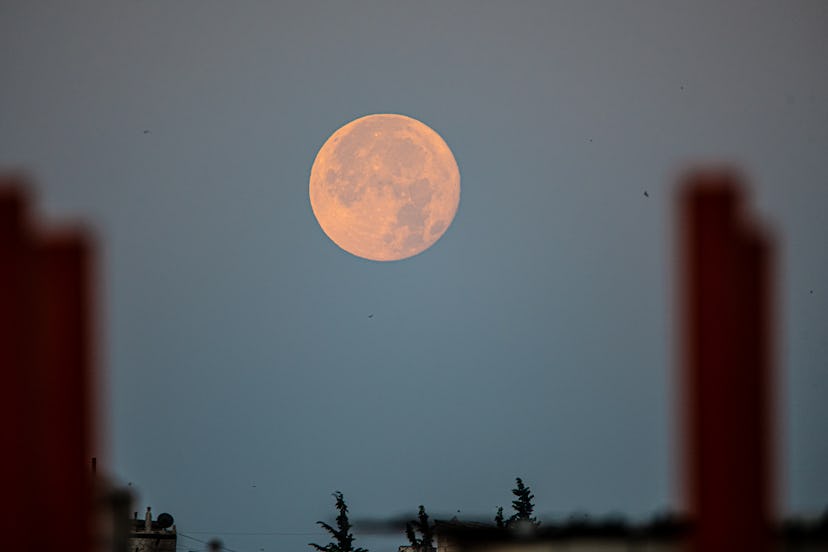August Brings On Two Rare And Spectacular Full Moons
This month we're getting two spectacular shows in the sky.

Skywatchers, this month’s for you. The Perseids meteor shower will be peaking halfway through this month, followed by k-Cygnids meteor shower. But the most spectacular show might be more mundane on its face — two spectacular moon shows occur this month.
If it feels like skywatchers are being spoiled, they are. In July, we saw two supermoons in a row, and we’re going to get the same thing in August. But this month, the two supermoons each have something special about them — one’s a “Super Sturgeon Moon,” and the other is a rare blue moon.
What is a Supermoon?
In the most general terms, a supermoon happens when the moon is closest to Earth because of its orbit. When it’s closer to us, it looks bigger in our sky. On average, the moon is 253,000 miles away, but during a supermoon, it comes closer to roughly 226,000 miles away, according to NASA.
What is a “Super Sturgeon Moon?”
In August, we’ll get to see the Super Sturgeon Moon, a name given to the full moon in August, which, this month, also happens to be a supermoon.
“The Full Moon in August is called Sturgeon Moon because of the large number of sturgeon fish that were found in the Great Lakes in North America this time of year,” TimeandDate explains.
When can I see August’s “Super Sturgeon Moon?”
The Super Sturgeon Moon will occur on Tuesday, Aug. 1, with the moon reaching its peak at 1:33 p.m. EDT, according to the Farmer’s Almanac.
You can use the publication’s Moonrise and Moonset Calculator to find the exact times based on your location so you can narrow down the exact peak when it looks the largest in the sky.
What is a Blue Moon?
Seeing the Super Sturgeon Moon would be spectacular enough, but we’re also going to see a rare blue moon in August as well. The term Blue Moon doesn’t actually mean the Moon will be blue. Instead, it’s a special name given when there’s a second Full Moon in the same calendar month. These Moons are rare because a Full Moon typically comes every 29 days, according to EarthSky.com.
Since most months have more than 29 days, it is possible for there to be two Full Moons, but they don’t happen too often. The last time we saw a Blue Moon was Aug. 22, 2021 — and now we’re getting another.
When can I see August’s Blue Moon?
The Blue Moon will be visible on Aug. 30 and peak at approximately 9:36 p.m. ET, according to Farmer's Almanac. Make sure to double-check the best time to see the Blue Moon based on your location using the Moonrise and Moonset Calculator because the next time we’ll have a Blue Moon isn’t coming until 2026.
Oh, and don’t forget about the next meteor shower.
Throughout August, the Perseids meteor shower is still lighting up the sky, and it’s set to peak around Aug. 13, 2023, according to In The Sky.
“The shower is expected to reach peak activity at around 04:00 EDT on 13 Aug. 2023, and so the best displays might be seen before dawn on 13 August,” the site notes.